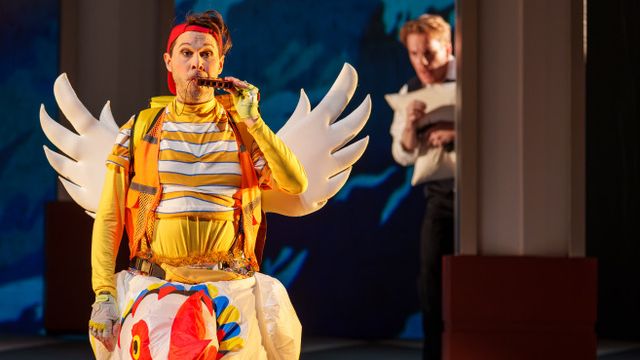The Magic Flute
I am sure that a train station is one of the last places in that Mozart would choose to set his seminal opera The Magic Flute, but it works in every way!
State Opera South Australia have teamed up with Opera Hong Kong and Beijing Music Festival to breathe new life and humour into one of the all-time classic operas.
For those who don’t know the story and its famous connection to Freemasonry, Prince Tamino is tasked by the Queen of the Night to rescue her daughter, Pamina, from the high priest Sarastro. Armed with a magic flute, Tamino, accompanied by the bird-catcher Papageno, discovers Sarastro is actually wise and that the Queen is the true villain. Both Tamino and Pamina undergo trials of virtue to join Sarastro's community, ultimately defeating the Queen and her allies in a triumph of reason and light.

Director Shuang Zou (also a movie director) has taken an opera written in 1791 and successfully brought it up to date while still respecting its history. Her characters are real people, albeit quirky (but that is the nature of the opera) and the world they inhabit is familiar to us.
There has been a tendency late to modernise a play or opera just for the sake of changing it. Not so with Zou’s conception. It is carefully thought through and makes sense. I loved the idea of a cartoon-like projection at the start that brings Mozart from the 18th century to the 21st century. Mozart then features sporadically reminding us of the opera’s historical roots.
Don Potra’s set and costumes are a miracle of design! The train station is the central element of the opera with clever touches ranging from a bullet train becoming the serpent who chases Tamino, to the three ladies who are flight attendants mirroring an advertisement in the station, to the speaker who is a homeless bag man. Potra’s colour palate has parallels with Freemasonry; blue and silver for the night and orange and gold symbolising the Temple of Wisdom. The patterns on the stage floor and the design of the moving pillars and beams also have their origins in the ancient craft. I particularly enjoyed his projections for the Queen of the Night’s Act 2 aria where the train disappears and we enter a world that exists in the ether. Potra’s designs are enhanced by Glen D’Haenens’ lighting that either grounds us in reality or takes us to flights of fancy.
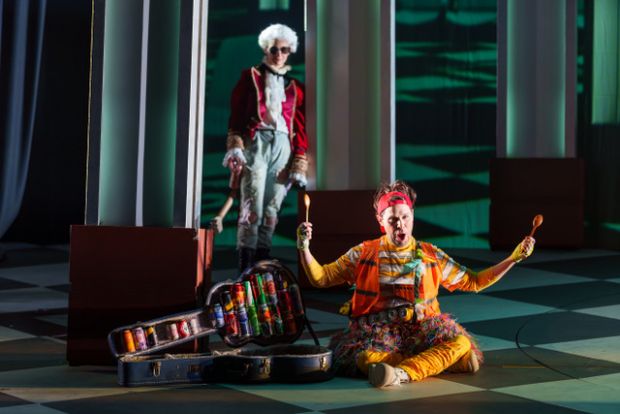
Dane Lam conducts the Adelaide Symphony Orchestra, bringing to life Mozart’s majestic opera, written in less than six months. The sound is glorious!
Brilliant young Australian tenor Nicholas Jones as Tamino is barely off stage and adds his liquid gold voice and acting talent to the role. He is partnered by Sofia Troncoso as Pamina who has one of the purest soprano voices this reviewer has heard for a long while. They are an ideal romantic couple.
David Greco’s Papageno is an audience favourite with his velvet-like voice, comic timing and the most amazing birdman costume that adds to the hilarity. He is an ideal foil for Jones and a perfect match for Jessica Dean’s Papagena who is a Bird of Paradise in every way.
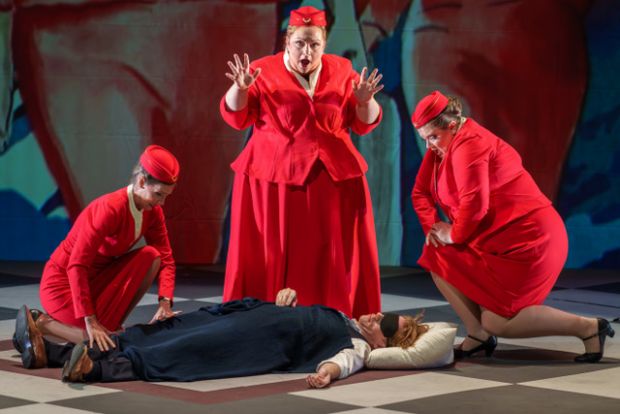
The role of the Queen of the Night is well known as a test for any coloratura and not only does Danielle Bavli look a million dollars, she nails the two taxing arias, particularly the act 2 aria which seemed effortless. Her minions (or three ladies - Helena Dix, Catriona Barr and Fiona McArdle) are a comic and vocal delight as they link the world above with the underworld (or night).
Teddy Tahu Rhodes is beloved in the opera world and for good reason. His rich, sonorous bass voice rings through the theatre, and his Sarastro is a highlight of the opera as is his costume which sees him tower above the rest of the cast. His ‘O Isis and Osiris’ was memorable as was his entrance in Act two which sees him sitting on a cloud supported on a pole reminiscent of an Indian Fakir.
Mark Oates is odiously reptilian as Monostatos, creeping around the stage as the slave of Sarastro always up to no good and lusting after Pamina.
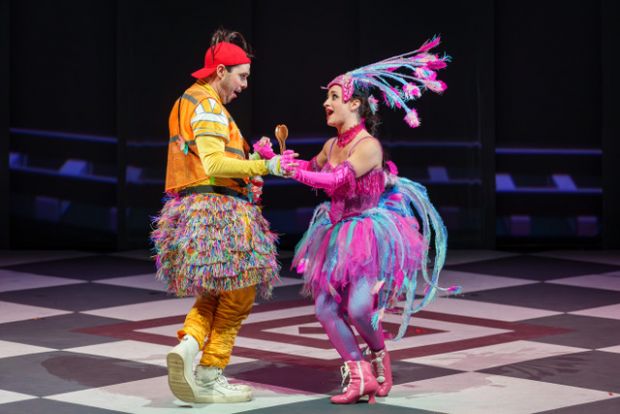
Pelham Andrews adds gravitas to the Speaker role, even though dressed as a bag man. His presence and voice and his entrance in a pile of lit up bags is a stroke of genius.
The Three Spirits (or youths) - Phillip Cheng, Ethan Zhang and Celine Yuan - play their roles aging as the opera progresses. Their voices are sweet and able to carry through the theatre. Due to illness the 1st Spirit was unable to sing and was voiced from the side of the stage. Their first entrance in a triplets baby carriage was a surprise and a delight!
The principal cast is completed by Callum McGing and Jamie Moffatt as Armed Men 1 & 2, and Andrew Turner & Nicholas Cannon as Priests 1 & 2.
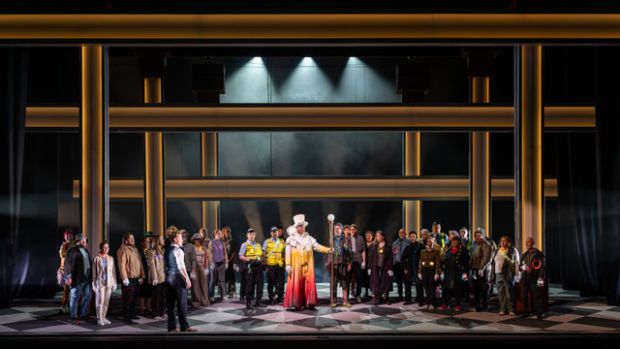
The chorus become travellers, priests, animals, gangsters in various guises. I particularly liked their angular animal heads and the glow in the dark elements of the costuming. As always, the State Opera South Australia chorus add richness to the overall vocal sound.
The Magic Flute is a triumph of singing, staging and conceptualization and a credit to State Opera South Australia, Opera Hong Kong and Beijing Music Festival. It is a truly masterful piece of theatre!
Barry Hill OAM
Photo Credit Andrew Beveridge
Subscribe to our E-Newsletter, buy our latest print edition or find a Performing Arts book at Book Nook.

